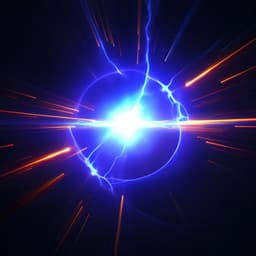
Physics
Shaped liquid drops generate MeV temperature electron beams with millijoule class laser
A. Mondal, R. Sabui, et al.
Discover how researchers, including Angana Mondal and Ratul Sabui, have harnessed non-relativistic laser intensities to generate MeV temperature electrons using dynamic target structuring of micro-droplets. This innovative approach paves the way for efficient compact, ultra-fast electron sources, demonstrating significant advancements in electron radiography.
~3 min • Beginner • English
Related Publications
Explore these studies to deepen your understanding of the subject.







